| Voice/Instrument: | Cello |
Biography
Emanuel Feuermann (November 22, 1902, Kolomyia, Galitzia, Austro-Hungarian Empire – May 25, 1942, New York City) was an internationally celebrated cellist in the first half of the 20th century.
Both of Feuermann's parents were amateur musicians. Feuermann's father, who played the violin and cello, was his first teacher. Feuermann's older brother Sigmund was also musically talented and their father decided to move the family to Vienna in 1907 so that Sigmund could launch a career. At the age of nine, Feuermann received lessons from Friedrich Buxbaum, principal cello of the Vienna Philharmonic, and then studied with Anton Walter at the Music Academy in Vienna. In February 1914, at age eleven, he made his concert debut, playing Joseph Haydn's Cello Concerto in D major with the Vienna Philharmonic conducted by Felix Weingartner.
In 1917, Feuermann went to Leipzig where he studied with the legendary cellist Julius Klengel. In 1919 cellist Friedrich Wilhelm Ludwig Grützmacher (1866–1919), the nephew of Friedrich Wilhelm Grützmacher, died, and Klengel recommended Feuermann for Grützmacher's position at the Gürzenich Conservatory in Cologne. Feuermann also became principal cellist of the Gürzenich Orchestra, by appointment of its conductor (who was also the conservatory director) Hermann Abendroth. Feuermann also, as part of the position, became cellist of the Bram Elderling Quartet. At this time, he also joined a short-lived piano trio with his brother and Bruno Walter, the latter on piano.
In 1929, Feuermann became professor at the Musikhochschule in Berlin where he taught for the next four years. His musical collaborations during this time included violinists Carl Flesch, Szymon Goldberg, Joseph Wolfsthal and Paul Hindemith, who played the viola in a string trio with Feuermann and Wolfsthal. Other collaborators included Jascha Heifetz, William Primrose, and Arthur Rubinstein.
On April 3, 1933, the rise of Nazism led to his being dismissed from his position at the Berlin Conservatory because of his Jewish background. He moved to London, along with Goldberg and Hindemith. He toured Japan and the United States (New York City). He then returned to Europe, where he married Eva Reifenberg in 1935. He played the solo part in the premiere of Arnold Schoenberg's Cello Concerto with Thomas Beecham conducting. He moved for some time to Zürich, but happened to be in Vienna at the time of the Anschluss. Bronislaw Huberman helped Feuermann and his family escape to British Palestine. From there they moved to the United States in 1937.
He taught privately and at the Curtis Institute of Music until his death. Among his notable pupils were Bernard Greenhouse, Suzette Forgues Halasz, Aldo Parisot, Alan Shulman, David Soyer, and August Wenzinger.
In the US, he made numerous legendary chamber-music recordings with Jascha Heifetz, Arthur Rubinstein and others. His relationship with Paul Hindemith suffered when Hindemith chose Gregor Piatigorsky to premiere his Cello Concerto.
Feuermann died in 1942 due to complications in a surgical operation for haemorrhoids.
Klengel wrote of Feuermann, "Of all those who have been entrusted to my guardianship, there has never been such a talent...our divinely favoured artist and lovable young man."
Jascha Heifetz remarked that talent like Feuermann's comes once every one hundred years. Indeed, when Feuermann died, it was only after seven years that Heifetz collaborated with another cellist, Piatigorsky. Artur Rubinstein also declared Feuermann to be "the greatest cellist of all time", also making a direct comparison with Pablo Casals. Of course, Heifetz and Rubinstein were long time collaborator of Feuermann's, most notably in their trio ensemble.
During his first tour of the United States in 1935-36, Feuermann met with enthusiastic reviews from music critics. After a 1938 Proms performance in London, critic Reid Steward of The Strad wrote "I do not think there can any longer be doubt that Feuermann is the greatest living cellist, Casals alone excepted..."
The honorary pallbearers at his funeral included some of the greatest musicians of his time: the pianists Rudolf Serkin and Artur Schnabel, the violinists Mischa Elman and Bronislaw Huberman, and the conductors George Szell, Eugene Ormandy, and Arturo Toscanini. During the procession, Toscanini broke down and cried, "This is murder!"
In a 1954 discussion with José Maria Corredor, when asked which cellists he particularly admired, Pablo Casals said, "What a great artist Feuermann was! His early death was a great loss to music."
In 1929, Feuermann purchased a cello made by David Tecchler in Rome in 1741. From 1932, Feuermann also owned an instrument made by another Venetian master luthier Domenico Montagnana in 1735. This instrument, which continues to bear his name, is today in the hands of a Swiss cellist and collector. It was larger and wider than the Tecchler.
Feuermann later owned the De Munck Stradivarius cello built in 1730. It is currently on extended loan from the Nippon Foundation to the cellist Steven Isserlis.
Feuermann is also said to have owned and played a Gofriller cello, later owned by American cellist Joseph Schuster; from Schuster, it passed to Jascha Silberstein.





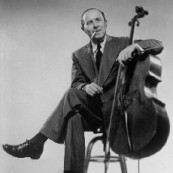
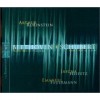
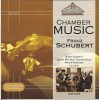
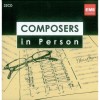
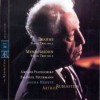
![The Heifetz Collection, Volume 9 [2 CD]](http://static.classicalm.com/repository/disk-cover/small/935-img1316984135213633.jpg)
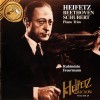
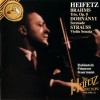
![The Heifetz Collection, Volume 5 [2 CD]](http://static.classicalm.com/repository/disk-cover/small/723-img1315251789683087.jpg)